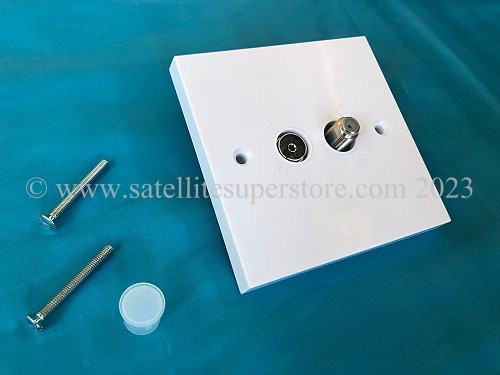ericmark, I formatted my reply in fairly non-technical terms to mirror the language used by the OP, and simply found an image of a shielded wall plate to use as an example of a decent design to help illustrate the response. I don't use that specific plate, which is why I wrote "plate
like this" rather than the definitive "
I use these". I wanted to make the distinction between a shielded design and the contractor-style unshielded wall plates that one might find sold cheap online.
I hope that clears up any confusion.
Now, if I can move on to clarify some of the points in your reply...
Simple method is to use the RF2 output from Sky box and feed this to a booster which allows DC though and from that to each room.
So one cable from where sky box is to loft with booster in loft then cable to each room is norm.
Which is what I already said.

But there are some extra points to make.
1) Signals of different frequency can be combined and split so you can use same cable which connects Sky box to LNB to take UHF signal to loft.
I think you'll find that'll be a problem. If the cable comes directly from the LNB (attached to the satellite dish) to the Sat inputs on the back of a Sky box then you won't be able to use that for anything other than receiving the satellite signal.
However, if you are inferring that the signal cable from the LNB goes to the distribution amp (LNB in) first and that single drop cables can be used for TV signal, the satellite dish feed from the LNB and also the return back from the RF2 output then I think you'll have a problem there too. The first issue is, I think, that the sockets for signal outputs (TV, Sat, FM/DAB) are not electrically linked to the return socket - so how can one cable be used for all the signals.
The second issue is what happens to the signals at the loft amplifier end? The amp has separate sockets for the downlink and uplink feeds. How do you propose to split the up and down signals to accommodate the two sockets?
2) Many wall sockets have capacitors to de-couple so static on aerials will not upset TV. These do not allow DC through so are no good with digi-eyes.
Which is why it is important to look for sockets and amps that allow 9v pass, as I said previously.
3) Using RF means and HD signal becomes non HD so if you want really good picture then other methods need to be used.
True, but I don't think HD has been mentioned by the OP, so we might be getting ahead of ourselves.
4) The RF output from Sky box may be on a frequency already in use if you also want to watch freeview you may need to change the output frequency.
Valid point.
Well then, I bet the OP is totally baffled now. And all they wanted to do was watch Sky telly in the bedroom.

If anyone is still reading this, bless you. Here's some good info about wall plates and signals
LINK



